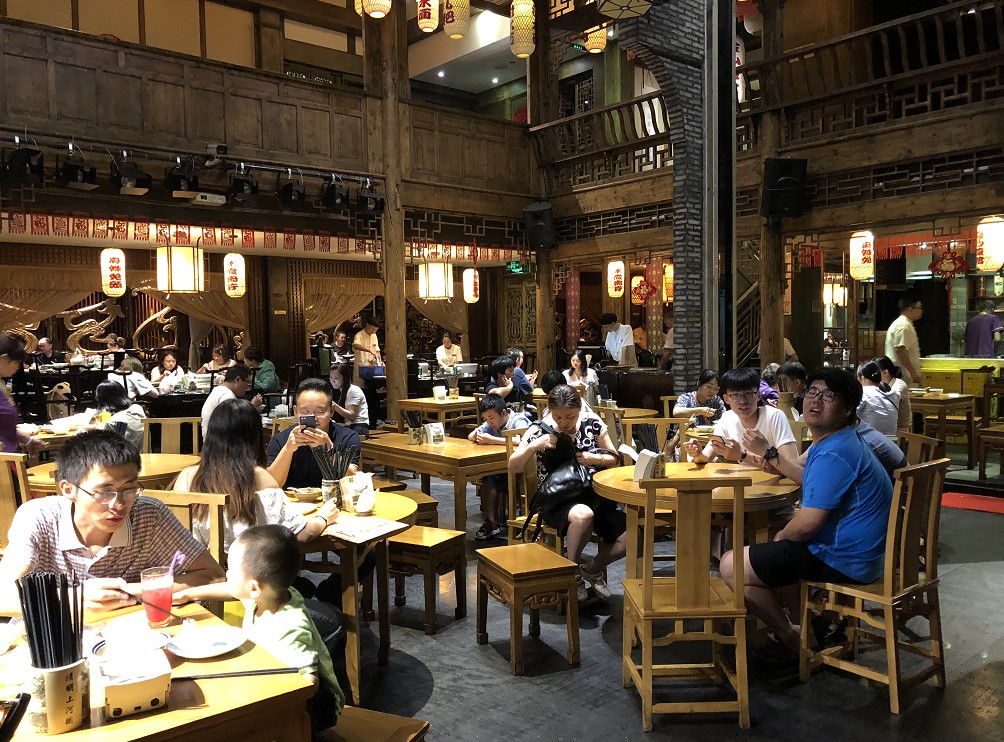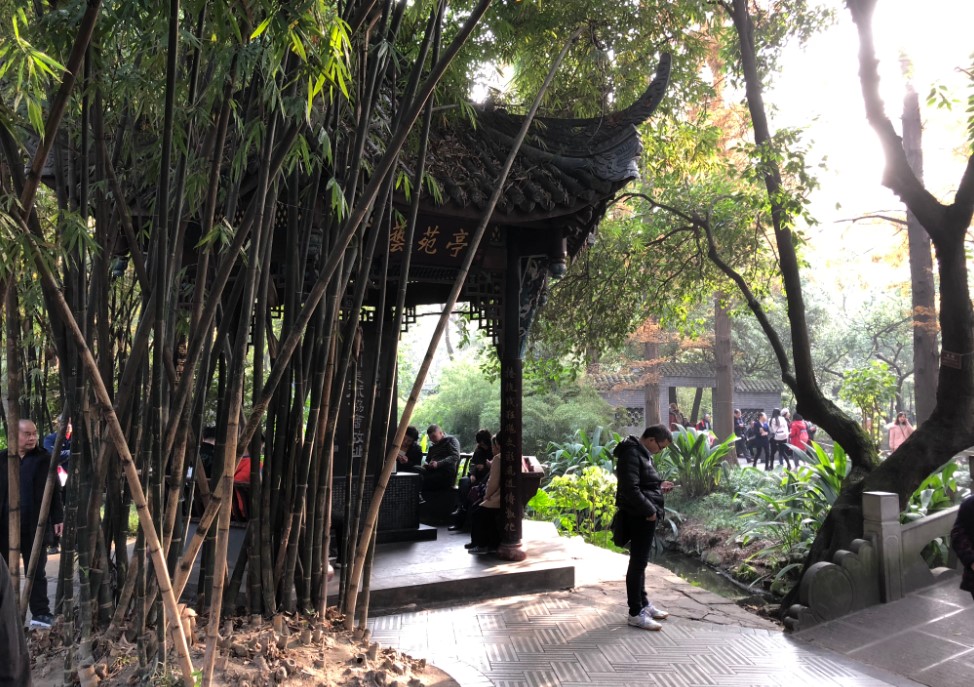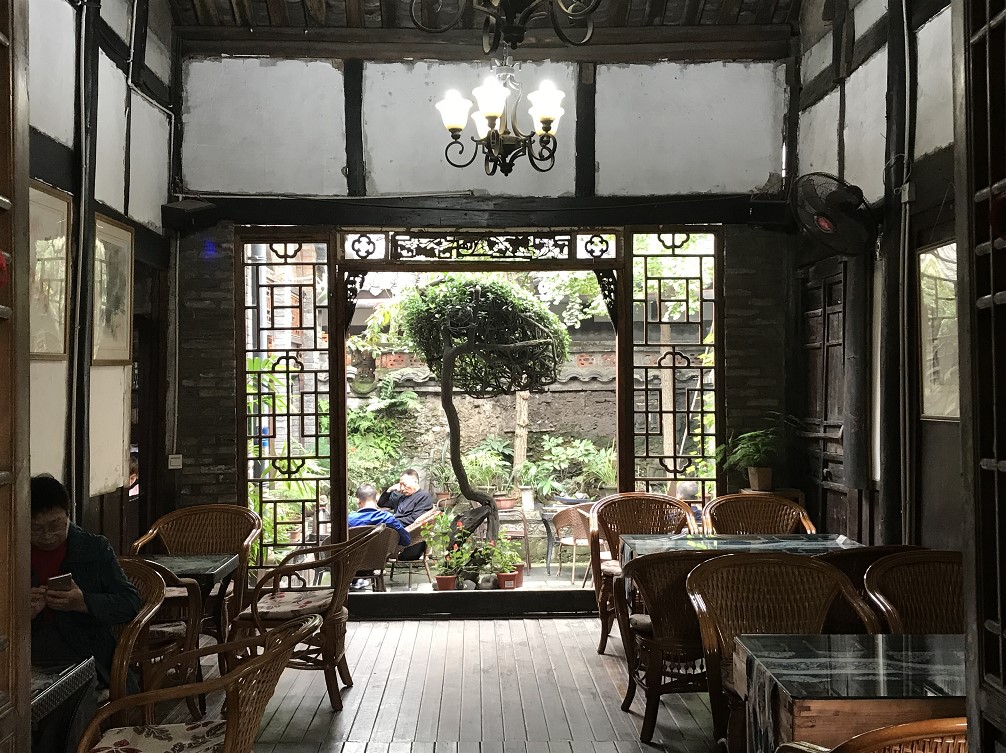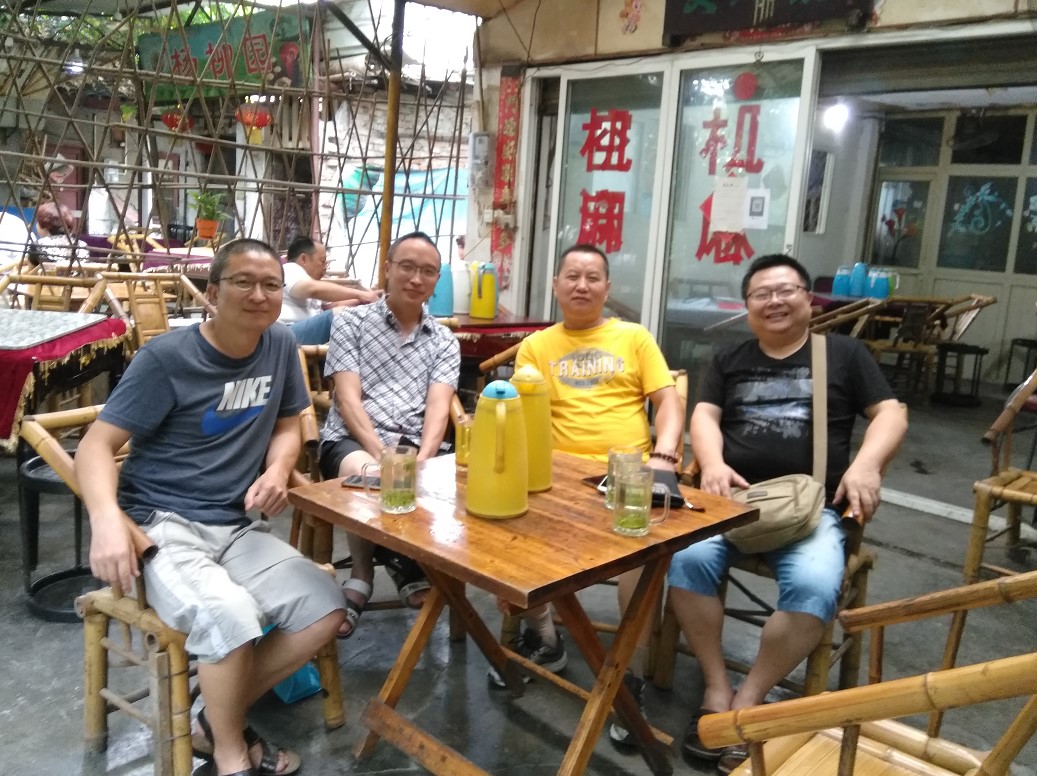The Chengdu teahouse and the good life
30 July 2019
An endearing feature of Chengdu is its numerous teahouses. They have occupied a unique and cherished place in the daily lives of Chengdu people for centuries. Long before theatres, shopping malls, coffee shops and bars, there were teahouses. Then and now, teahouses are more than places to enjoy a cup of tea. When public spaces were underdeveloped, Chengdu’s teahouses served a myriad of social functions – they were vital meeting spaces, leisure and entertainment venues, restaurants, and even informal mediation centres.

Food, performances and lively games of mahjong are common sights in a Chengdu teahouse. Credit: DFAT
Locals still do many things in teahouses – play mahjong, read, talk business, gossip, display song birds, enjoy Sichuan opera, listen to story tellers, and some even get a haircut and have their ears cleaned – all while sipping tea! Today, visitors can get a feel of how Chengdu locals spend their leisure time. The attraction is not in an ancient palace or imperial tomb, but in simple and casual surrounds, often outside, grounded in the daily lives of ordinary people. It is quite common to spend half a day or more at a teahouse.
Chengdu boasts the most teahouses of any city in China and there are several important preconditions for this. One underlying factor is that the Chengdu plains were endowed with fertile farmlands after the Dujiangyan Irrigation System was built in 256 BCE, becoming known as the “Land of Abundance”. Here, inhabitants have enjoyed bountiful harvests for over two millennia.

A stroll along the riverside will reveal scores of hidden gems. Credit: DFAT
Another is that Sichuan is one of the earliest tea growing and drinking regions in China. Tea's popularity in Chengdu comes from its location as an important tea producing region, combined with its historically strategic position linking key trading routes, especially the old Tea Horse Road (link here) that connected Tibet, Yunnan and other regions of China.
Yet another factor was the example set by nobility, which made tea drinking a symbol of a civilised culture. Historically, aristocrats would gather with scholarly friends to discuss the meaning of life, create poetry and sample fine teas. This way of life spread widely and tea drinking became an indispensable part of daily life as well as a ceremonial ritual. There is scant record of when tea was first enjoyed in Chengdu, but by the Tang dynasty (618–907 AD) more than 400 teahouses were reported to exist.

The stone courtyard teahouses of Chengdu’s Wide and Narrow Alleys blend modern with the traditional. Credit: DFAT
Teahouses come in all shapes and sizes – they range from the humble hut to well-appointed and exclusive establishments. Some are in ordinary residential streets while others stand in historic gardens and temples. Most are outdoors or partially outdoors, surrounded by greenery. The hallmark furniture is the bamboo armchair ubiquitous in the region. The choice of tea is often a simple one among the local favourite zhuyeqing (竹叶青- a green tea), jasmine (花茶), chrysanthemum (菊花) and my personal favourite, tieguanyin (铁观音). Tea’s affordability at around $2-4 with limitless refill is another reason why it is so popular.
As foreigners, we’re more likely to be introduced to the most well-known and popular teahouses in Chengdu, such as the Heming Teahouse on the lake in People’s Park, Dacisi Teahouse within Daci Temple, or the Mingwan Teahouse at Wangjiang Park overlooking the Jinjiang River. For an authentic, unvarnished experience, Pengzhen town in Shuangliu District has down-to-earth teahouses frequented by locals for generations.
A hot cup of tea on a cold day. Credit: DFAT
If you’re invited by a local business partner to have tea at a Chengdu teahouse on the weekend, it is no ordinary invitation. It is unlike the banquet or formal meal that is normally conducted in business relationships in China (see here for how to handle a formal banquet).
It is akin to inviting someone to watch the cricket or footy in Australia. It means your Chengdu partner or friend is extending a genuine invitation to spend leisurely time with their family and friends without airs and graces. Unlike the efficient and ritual-bound dinner banquets that I’ve written previously, spending time with your local friends in a teahouse is easy-going, unscripted, and often falls into idle reverie.
It is an opportunity to shoot the breeze and talk about family and holidays while sipping mellow fresh tea. At the same time, young family members might come and go to explore the surrounds; a local colleague might retreat to his mobile phone; another might find himself unable to stop munching melon seeds; a spontaneous card game may begin; stretches of silence might emerge; or one may even employ the services of a professional ear cleaner. Hours could pass. In our language, it’s “chill” time by way of simply drinking tea.

Tea drinkers band together on weekends. Credit: DFAT
I’ve found spending time in a teahouse a helpful way to understand the culture and tradition of my Chengdu friends. It also helps me appreciate the simple things in life, such as being relaxed, unhurried, and allowing oneself to switch to slow mode. And if you’re the one initiating an invitation to a teahouse, your local friends will be impressed with your understanding of Chengdu’s comfortable and leisurely lifestyle, ie, “the good life”.
Note: Historical references come from Lonely Planet, September 2014; The Economist, 17 September 2018
Click here to return to the Australian Consul-General's Blog on Southwest China
